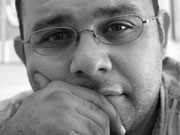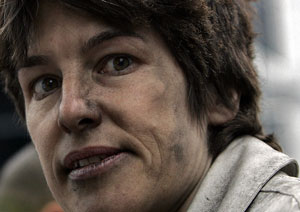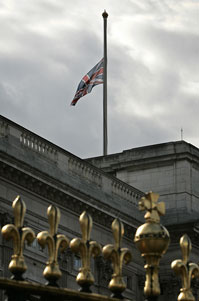 |
 | |||||||||||||
London's Darkest Day
|
 |
||||||||||||
|
July 7, 2005. I was looking forward to today. Yesterday had ended on a high. London had been nominated as the Olympic City for 2012. I had two excellent assignments today; the first was an 8.30a.m. photo-call at the Natural History Museum to photograph a new diamond exhibition. The second was an exclusive look at how the police were monitoring the security for the G8 summit from their secret control center.
I got in my car with a friend from AP and we started making our way as quickly as traffic allowed. The phone rang, "There's been a second explosion at Edgware Road tube. Go there instead as you're closer." My heart sank. This was no longer an accident as originally thought. How can there be two explosions on the tube in the same morning? I knew it must be terrorism. I began to think of 9/11. The first plane could have been an accident ...
We were very lucky. The traffic was a lot better than usual and we got to Edgware Road quickly. As we got to the scene, we were greeted by silence. The emergency services were all busy. No screaming of orders, or the sound of sirens. Unfortunately for photographers, the police had erected their cordons, and there was no way to get close to the tube station. I did a quick walk around the roads and decided which would be the best. Luckily I had picked the correct road. Within 10 minutes, the first passengers walked out and down the road, closely followed by the walking wounded. The first sight that drew me was a lady being helped by a young man. Her face was burnt and she had a protective white face mask on. She was barefoot, and had blood on her legs.
The wounded were taken to the Hilton Metropole Hotel. I decided to sneak inside and managed to stay for several minutes, taking pictures of the wounded waiting for treatment. It must have been the world's poshest triage area. The hotel's security soon noticed me, and I was asked to leave.
As I made my way there, a friend contacted me saying that he had heard that someone had been evacuated from Leicester Square tube following another explosion. On arrival I encountered no cars, buses, or people. There hadn't been another terrorist blast. Later I heard that the event had been a controlled explosion of a suspect package by the Army.
I got to Kings Cross. Police cordons were up and there was no access. The explosions were below ground and there was nothing to photograph. Knowing how long this day was going to be, I grabbed a sandwich and a coffee.
After another hour or so, I had to admit defeat; there was no way I could find an angle. I called the office and was told not to worry, as one of our photographers had managed to get a good shot. "Can you get to Downing Street for Blair in 20 minutes?" I said that it was impossible. I was sent anyway! It was for a picture of the prime minister arriving at Number 10. I missed it. I got another call, "Can you go to Buckingham Palace? The flag's at half mast." Back in the car, off I went.
This was the last image I took. It was a sad way to end London's darkest day. My city had been targeted by terrorists.
© Edmond Terakopian
Dispatches are brought to you by Canon. Send Canon a message of thanks. |
|||||||||||||
Back to August 2005 Contents
|
|




